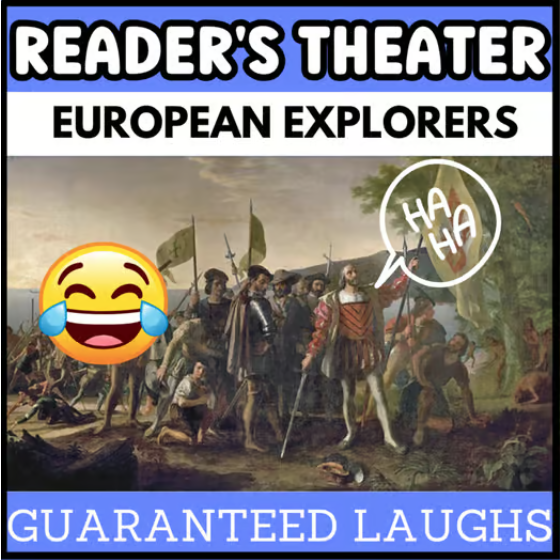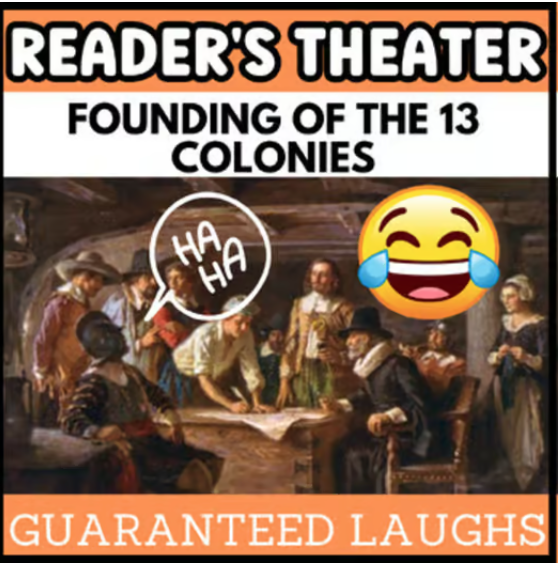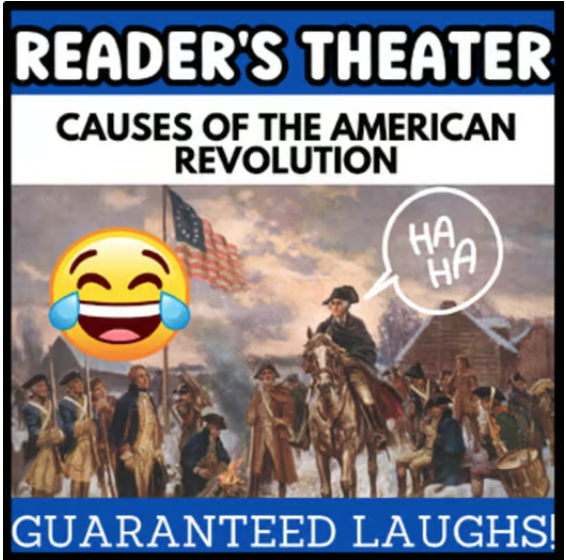Reader’s Theater is an engaging and effective way for students to practice fluency with a purpose, but if the script is about an important historical event, even better! Most Social Studies books are dry and boring and there is no way to getting around reading about history. It just can’t be skipped.
So why not bring some fun to your Social Studies lessons with Historical Readers Theater? Learning about key historical figures becomes much more engaging when kids get to pretend to be George Washington or Daughter of Liberty.
Upper elementary students can benefit from reading and practicing lines from Readers Theater skits, particularly those based on historical events. Here are 7 reasons teachers and homeschooling parents and guardians should use Readers Theater during their Social Studies lessons.
1. Enhancing Historical Understanding with Reader’s Theater
Readers Theater skits based on historical events make history come alive for students, helping them to understand and retain information better.
Skits based on historical events make history come alive for students, helping them to understand and retain information better.
Performing historical events in dramas provides context, making abstract concepts and events more concrete and relatable. For example, to help my students understand what the Stamp Act was during the American Revolution, I’ve had my students read a script that I created. You can get it here for FREE.
When students play the part of historical characters, they actually remember the names of these important individuals and the contributions they made in history. They also have a better understanding of the effects and the impact of historical events.
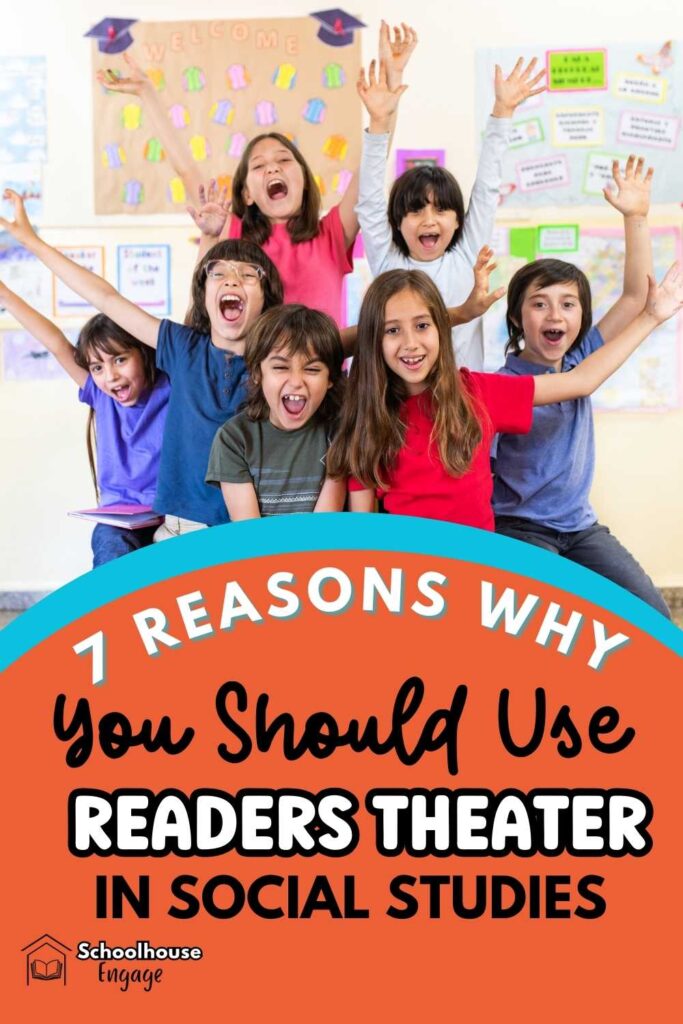
2. Improving Reading Fluency and Comprehension
Repeated reading is a great benefit of Readers Theater. When students know that they will have to perform in front of the class, they put more effort into practicing lines. I always tell my students to at least practice their lines twice before performing. When students are reading their lines multiple times, it enhances oral fluency and accuracy.
Improvement in fluency is not the only benefit of Readers Theater. Students will also improve their comprehension skills. They gain a deeper understanding of the text through repeated practice and performance. Readers Theater about history connects English Language Arts literacy to Social Studies.
3. Developing Public Speaking and Presentation Skills
Readers Theater builds confidence in students. Performing in front of peers isn’t easy for students and we know that self-esteem is created when children accomplish challenging tasks. Public speaking is a skill that many students struggle with, and the best way to overcome that fear is by repeated practice of speaking in front of others. Performing skits in the classroom is a great way to practice public speaking.
Another benefit of Reader’s Theater is that students have the opportunity to articulate new words that are domain-specific. They also will use expression when acting out their parts.
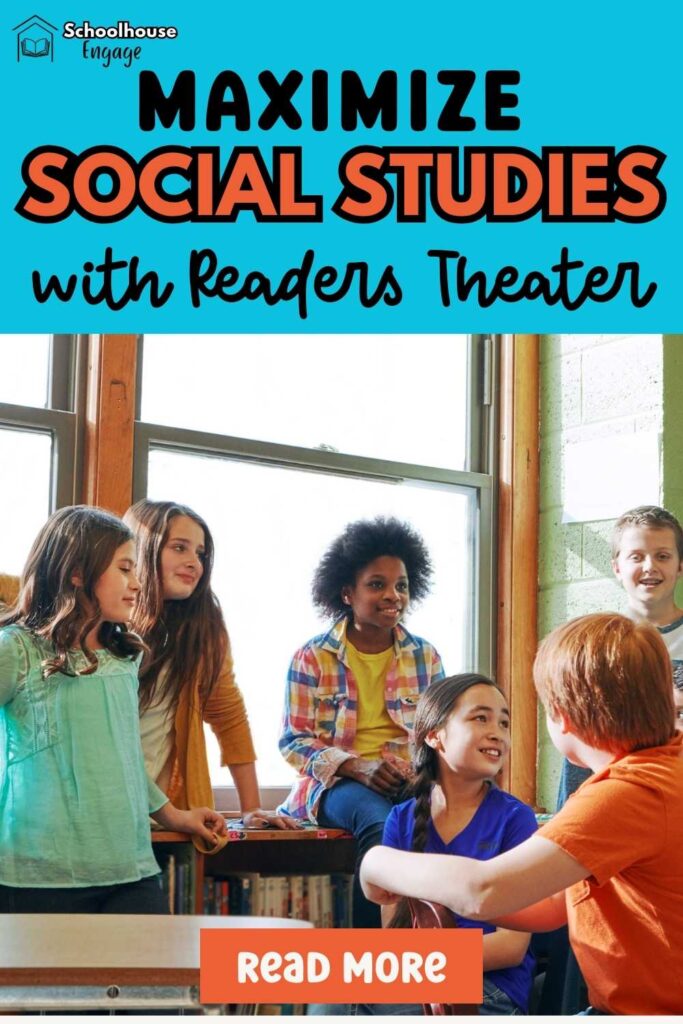
4. Encouraging Teamwork and Collaboration During Social Studies
Readers Theater is best read in small groups because it fosters teamwork and collaboration. Students collaborate by deciding who will play what part and they encourage each other to use gestures and accents. Sometimes they even invent and create their own props.
In the past, my students have read Readers Theater whole class. Most scripts have many characters to encourage class participation. The problem with this is that too many students tune out and have a hard time following along because there are too many parts. Also, they may wait too long until it is their turn to read their lines.
When there are 2-5 roles, this holds students accountable because they know that their part is coming up soon. They have no choice but to focus on the script and be responsible for when it is their turn.
Scripts that have 2-5 characters are also perfect for homeschooling families. When a Readers Theater play has too many characters, it gets confusing for parents and children. Readers Theater plays that have 2-5 characters make it easier to understand the conversations between characters.
5. Enhancing Critical Thinking and Creativity
When students act out parts of some of America’s greatest leaders, like George Washington or Thomas Jefferson, they use critical thinking to understand their characters’ motivations and historical events.
Readers Theater Skits that also include comprehension and close reading questions are a win-win. Students need to analyze the script to identify cause-and-effect relationships and to summarize.
Performing in front of other students allows for creative expression making Readers Theater fun and engaging. Students act out their roles with creativity and vocal expression. Being able to act out historical scenes contributes to a richer learning experience.
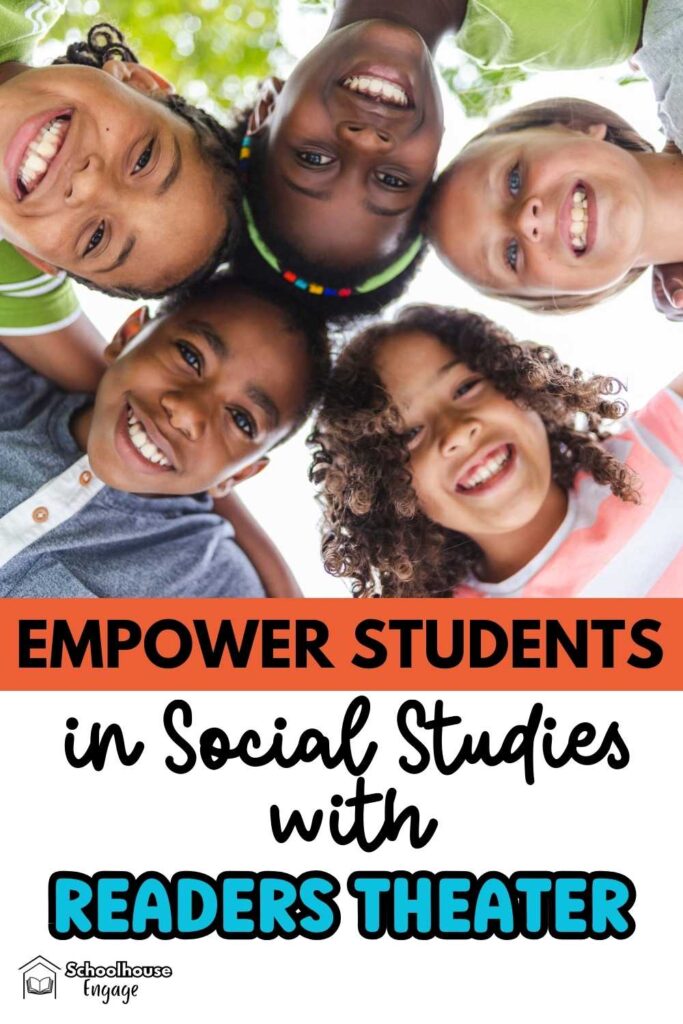
6. Boosting Engagement and Motivation
Kids love Readers Theater! When students practice their lines, I hear constant laughter in my classroom. After I introduced Readers Theater during our Social Studies times, I had students repeatedly ask me if they were performing a skit day after day during our Social Studies block.
Performing skits makes Social Studies fun and makes dry topics about history more engaging. fun and dynamic aspects of performing skits make learning enjoyable and memorable for students. If you haven’t incorporated Readers Theater into your Social Studies lesson, please give it a try. I promise that it increases student engagement and motivation. Get a FREE Readers Theater script below.
7. Reinforcing Vocabulary and Language Skills
Another huge advantage to Readers Theater is that students learn and practice domain-specific Vocabulary. Academic vocabulary needs repeated teaching and students will get exposure and practice of new words through skits.
If you have English Learners, performing skits will contribute to their language development. Reading and performing skits will improve overall language skills, including syntax and grammar.
Be sure to front-load vocabulary words that students won’t be able to figure out using context clues. I like to pull up images from online so students have a visual to go along with the definition.
For words that my students can figure out with context clues, I ask them the meaning of the words when they are done reading the skit. To reinforce some of the words, they complete a vocabulary organizer.
Final Thoughts
Using Readers Theater skits based on historical events for upper elementary students has many advantages. Your students will improve their fluency and comprehension and will have a better grasp of historical events.
I have a myriad of Social Studies Readers Theater in my TPT store. Below are some of my best sellers.
I encourage you to incorporate Readers Theater into your Social Studies curriculum to enhance students’ learning experiences and to make your Social Studies block more exciting for students. You got this! Giselle
Save this post for later. Click on the image and save it to your Pinterest board. 📌 📌 📌
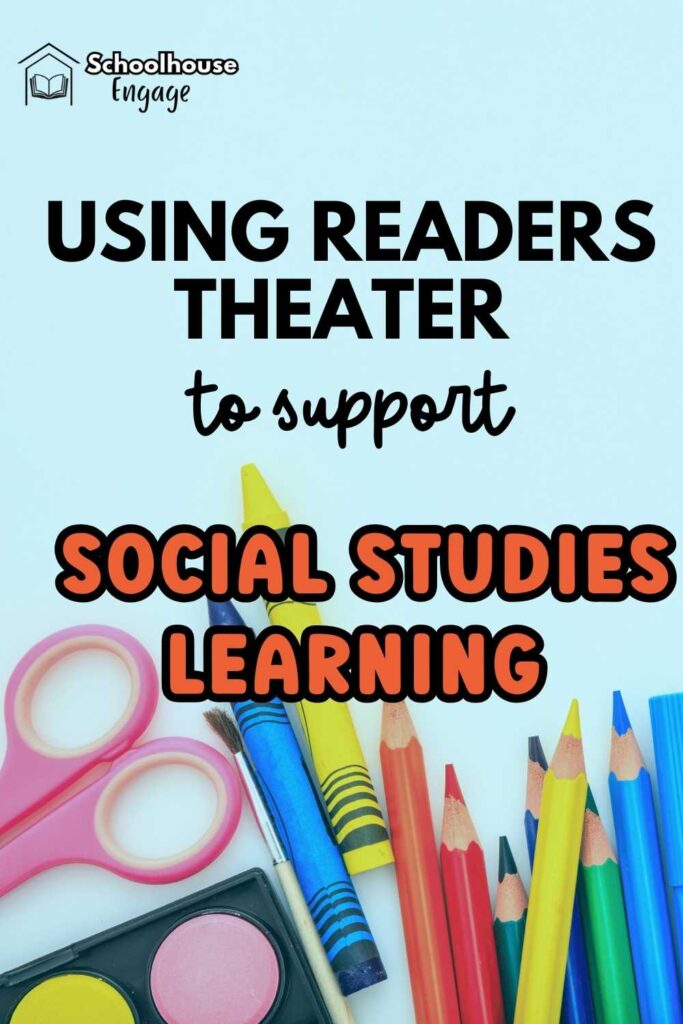
For more blog posts about Readers Theater, check out:

